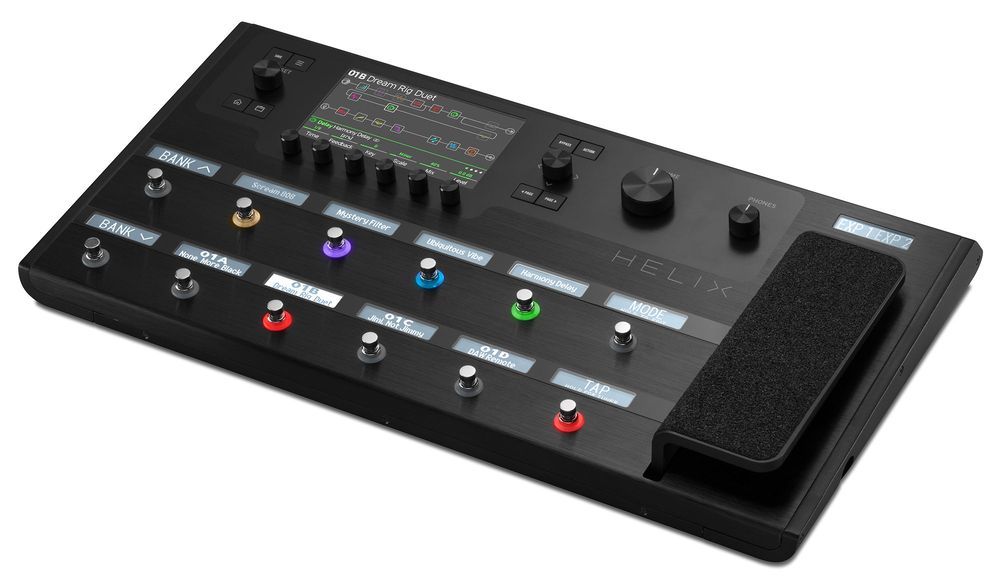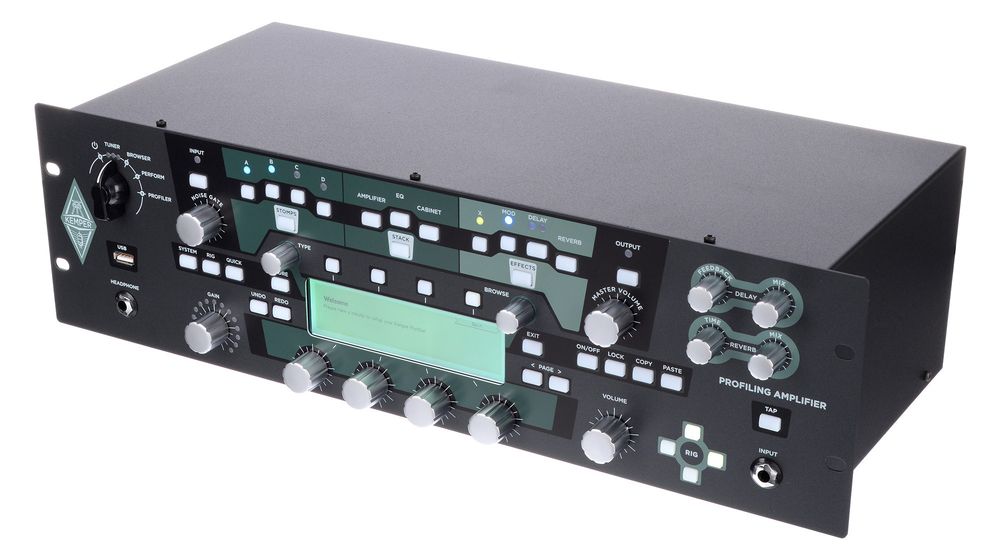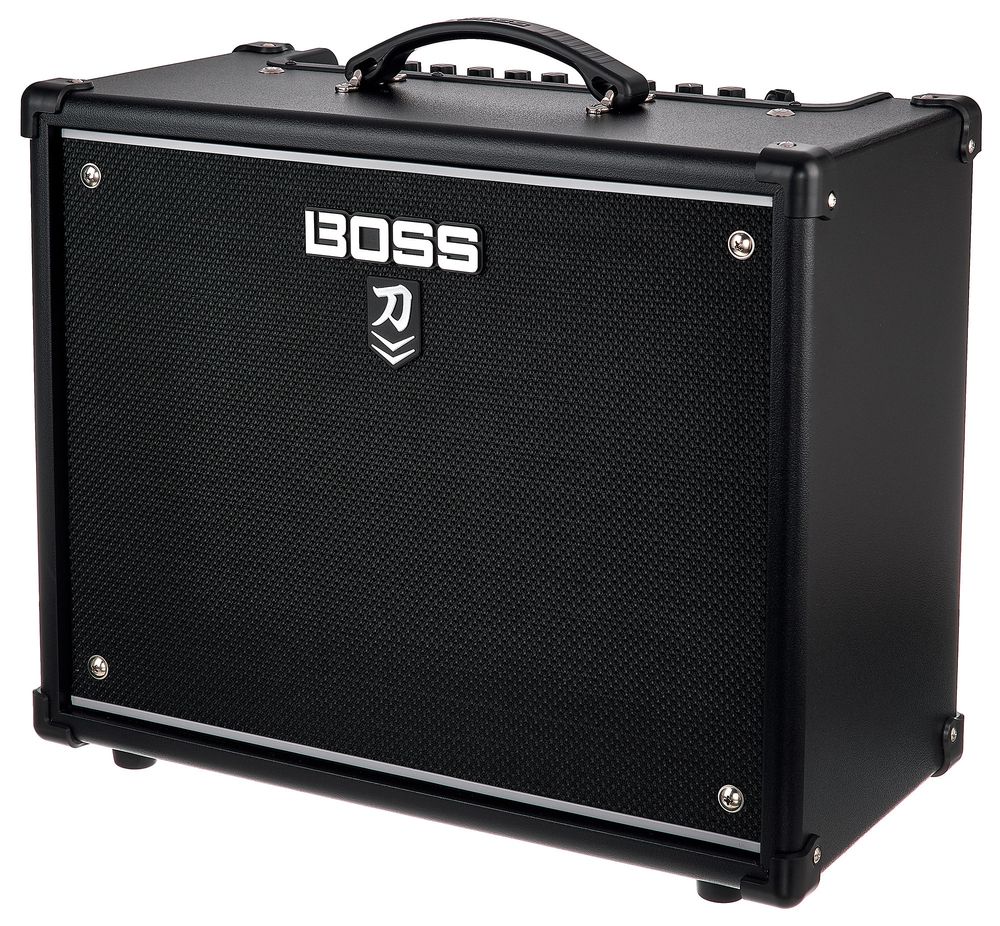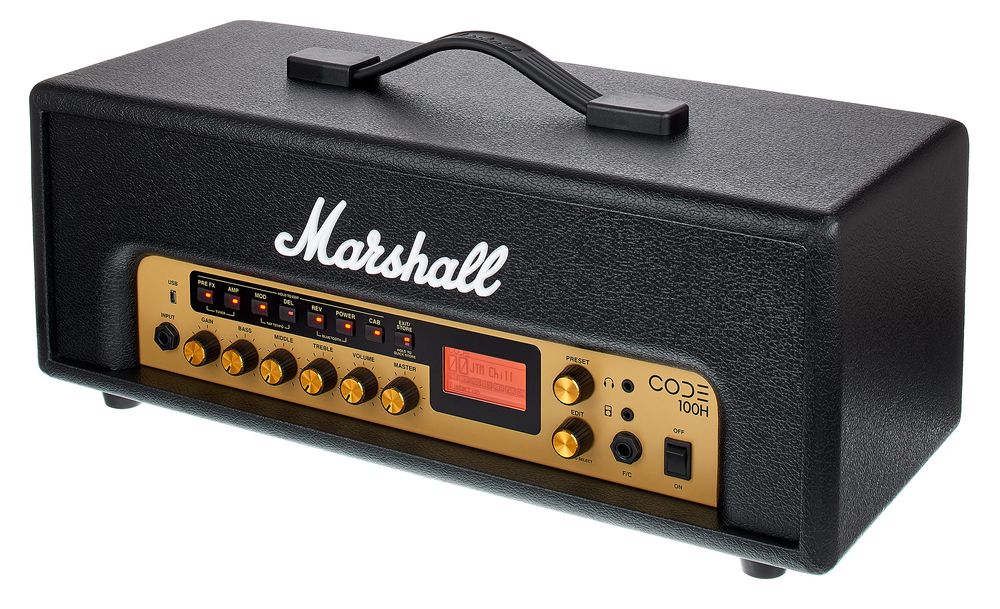7. Modeling Amp Types
Floorboard
The floorboard is the most compact solution. Like a multi-effects pedal, you place it on the floor in front of you and then use foot switches to call up individual sounds. Often, it includes an expression pedal for effect control (like Wah Wah). The floorboard connects directly to the mixer (for stage) or audio interface (at home). Many devices have a USB connection that links them directly to the computer without needing an additional audio interface. Generally designed for stage use, but of course, you can use it at home too. The key thing here is whether the device can be edited via a tablet or computer; otherwise, you might find yourself bending down or placing it on a table for adjustments. Typically, the floorboard doesn't have an integrated amplifier, so you'll need something like a power amp plus speaker cabinet or an active speaker to make the sound audible.
Rack Unit
For those who prefer having everything at eye level and securely stored, a 19" rack unit is the perfect solution. The modeling amp, in this case, is securely housed in a case or rack (in the studio), making it easier to edit if positioned at a suitable height. Generally, this type is designed for stage or studio use, but if needed, a separate footswitch is required for sound switching. Like the floorboard, most rack units don't have an integrated power amp, but a power amp in the 19" format can be combined in the same rack or case. This ensures everything is neatly wired and can be quickly set up and taken down.
Combo
Many guitarists, including tube amp enthusiasts, play at home with a small modeling combo. Here, everything is integrated: amp models, effects, a power amp, and a "real" speaker through which you hear the sound. Modeling combos come in various sizes and power levels (= volume). For home use, amps up to 30W are more than enough. But if you plan rehearsals or gigs, going for 50W or higher is a safer bet. That's just a rough guideline because it depends on how loud your bandmates play.
Head
Similar to tube amps, there's a separate unit here—a (modeling) amplifier including a power amp and a speaker cabinet, more tailored for stage use with higher power. Here, you can connect the amp to a box of your choice based on your needs. While some might go for a big 4x12 speaker cabinet for that trouser-flapping effect, others might be content with a small 1x12 box.






